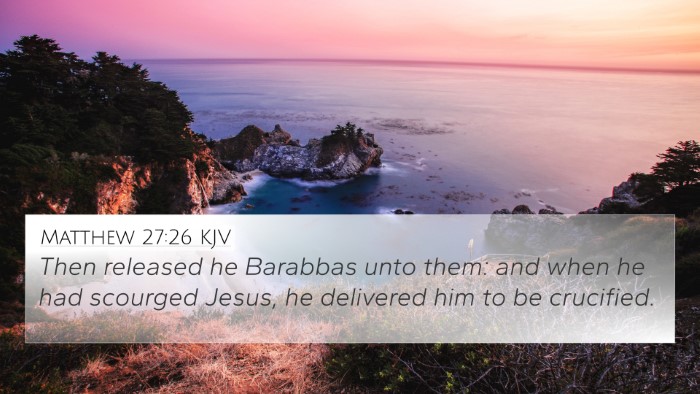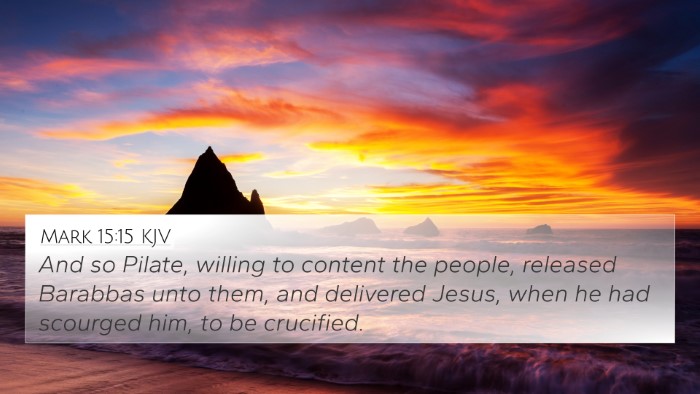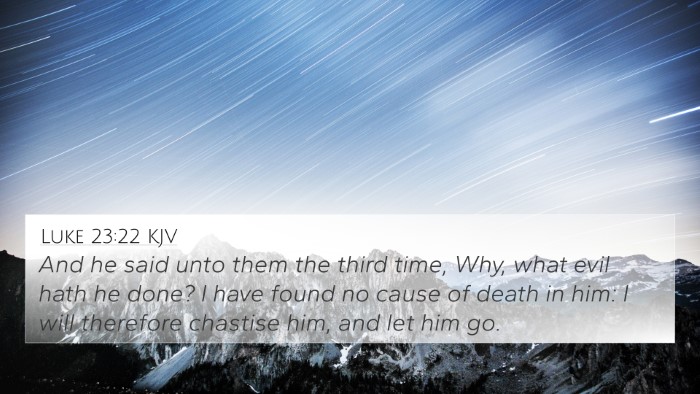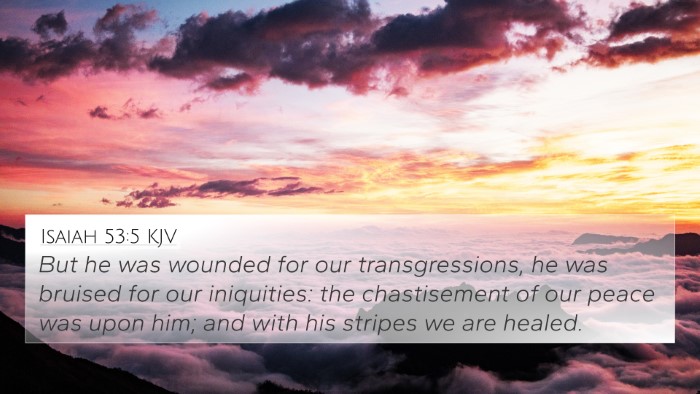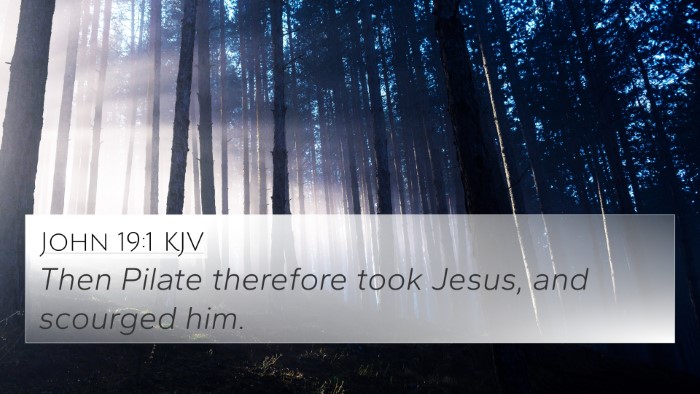Understanding Luke 23:16
Luke 23:16 states, "Therefore I will chastise him and release him." This verse occurs within the context of the trial of Jesus before Pilate and refers to the decision to punish Jesus as part of the legal proceedings, even when Pilate finds no guilt in Him.
Summary of Insights
This verse demonstrates several profound themes prevalent in scripture, including justice, mercy, and the fulfillment of prophecy. By examining public domain commentaries, we can uncover deeper meanings and cross-references that enrich our understanding of this text.
1. Contextual Analysis
In the lead-up to Luke 23:16, Pilate’s role emerges clearly. He is attempting to navigate the complexities of Jewish law while addressing the outcry of the crowd demanding Jesus’ execution. Pilate sees the option of chastising Jesus as a political maneuver to appease the masses while morally circumventing the wrongful condemnation of an innocent man.
Matthew Henry's Commentary
Matthew Henry comments on this passage by highlighting the political dynamics at play. Pilate's decision to chastise Jesus, instead of releasing Him outright, underscores the pressure he faced from the crowd and the risks associated with defying it. Henry emphasizes that such injustices occur when human considerations overshadow divine justice.
Albert Barnes' Notes
Albert Barnes notes that the act of chastising Jesus was a common practice in Roman legal culture, signifying that punishment could be administered even when not merited. This act illustrates the greater narrative of Jesus’ suffering for humanity's sins and the prophetic elements of His suffering as foretold in the scriptures.
Adam Clarke's Commentary
Adam Clarke elaborates on the theological implications of this event. Clarke argues that Jesus’ chastisement foretells the ultimate sacrifice He is to make, thus aligning with the prophecies regarding the suffering servant. It portrays Jesus not only as a man facing judicial mistreatment but also as the one destined to carry the weight of humanity's transgressions.
Connections and Cross-References
Luke 23:16 establishes a rich tapestry of connections within the biblical narrative. Below are notable cross-references that further illuminate the themes in this verse:
- Isaiah 53:5: "But he was pierced for our transgressions, he was crushed for our iniquities; the punishment that brought us peace was on him, and by his wounds, we are healed."
- Matthew 27:26: "Then he released Barabbas to them, but he had Jesus flogged and handed him over to be crucified."
- John 19:1: "Then Pilate took Jesus and flogged him."
- Acts 3:14-15: "You disowned the Holy and Righteous One and asked that a murderer be released to you. You killed the author of life, but God raised him from the dead."
- Hebrews 12:2: "Fixing our eyes on Jesus, the pioneer and perfecter of faith. For the joy set before him, he endured the cross, scorning its shame, and sat down at the right hand of the throne of God."
- 1 Peter 2:24: "He himself bore our sins in his body on the cross, so that we might die to sins and live for righteousness; by his wounds, you have been healed."
- Philippians 2:8: "And being found in appearance as a man, he humbled himself by becoming obedient to death—even death on a cross!"
Thematic Connections and Interpretations
The theme of injustice in Luke 23:16 ties into broader theological discussions within the scriptures regarding sin, redemption, and the nature of Christ’s mission. By understanding the intricacies of this verse through inter-biblical dialogue, readers can gain insights into God’s providence in the salvation history of humanity.
1. Justice vs. Mercy
Many commentators reflect on the juxtaposition of Pilate's attempt at justice against the reality of mercy shown through Christ's imminent sacrifice. The verse encapsulates the tension between human authority and divine purpose.
2. Fulfillment of Prophecy
The chastisement of Jesus connects prophetically to the Old Testament and positions Him as the fulfillment of the Messianic prophecies. This underscores the necessity of His suffering for the reconciliation of mankind.
3. Precedent of Suffering
As noted by various scholarly works, the concept of suffering is recurrent throughout Biblical texts, establishing a pattern that leads to a time of ultimate redemption through Christ.
Tools for Cross-Referencing
For those engaged in deeper biblical studies, employing tools for cross-referencing can significantly enhance understanding. Here are some resources that may assist:
- Bible Concordances: These are essential for finding specific verses and their thematic connections.
- Bible Cross-Reference Guides: Comprehensive guides allow users to locate verses that correlate with specific themes or biblical figures.
- Cross-Reference Bible Study: Engaging in cross-referencing methods can facilitate a more rounded understanding of the scripture.
Conclusion
Luke 23:16 invites readers to reflect on the complexities of faith, human justice, and divine mercy. Through comparative Bible verse analysis and thematic Bible verse connections, one can appreciate the depth of scripture and the eternal truths it conveys. Its profound implications resonate throughout biblical history and remains relevant for personal exploration and growth in faith.



